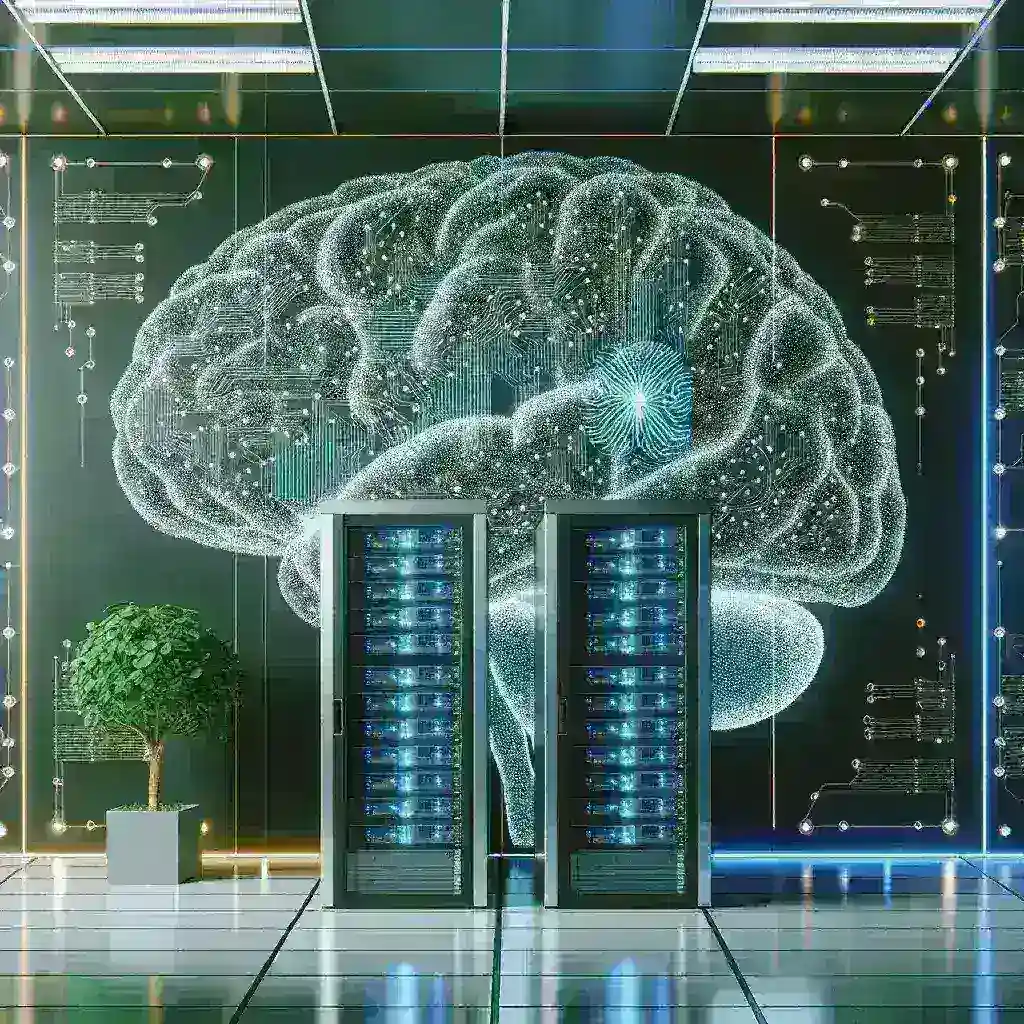Introduction
In the age of rapid technological advancement, the demand for data centers continues to soar, driven by cloud computing, artificial intelligence, and the Internet of Things (IoT). However, this growth comes with significant environmental challenges, including high energy consumption and carbon emissions. As a solution, researchers are turning to brain-inspired hardware, or neuromorphic computing, to create sustainable and efficient data centers. This article delves into the principles of brain-inspired hardware and its potential to revolutionize the data center landscape.
Understanding Brain-Inspired Hardware
Brain-inspired hardware mimics the structure and functioning of the human brain, aiming to process information more efficiently than traditional computing systems. Unlike classical computers that rely on binary code and linear processing, brain-inspired systems utilize a network of interconnected nodes that function similarly to neurons and synapses. This architecture allows for parallel processing and dynamic learning, which can significantly enhance computational efficiency.
The Science Behind Neuromorphic Computing
Neuromorphic computing involves the design of hardware that imitates the neurobiological architectures present in the human brain. Key features include:
- Spiking Neural Networks (SNNs): These networks communicate using spikes, akin to how biological neurons transmit information, resulting in energy-efficient processing.
- Event-Driven Processing: Brain-inspired hardware processes information only when changes occur, drastically reducing energy consumption during idle periods.
- Adaptive Learning: The ability to learn and adapt in real time, allowing systems to optimize themselves based on incoming data.
The Role of Brain-Inspired Hardware in Sustainable Data Centers
Data centers are notorious for their energy demands, primarily due to cooling systems and the continuous operation of servers. With brain-inspired hardware, data centers can achieve significant energy savings and enhance performance in several ways:
1. Enhanced Energy Efficiency
Brain-inspired systems are designed to be more energy-efficient than traditional hardware. By employing event-driven processing, these systems only consume power when actively processing data. This capability can lead to a reduction in energy consumption by up to 90%, particularly during off-peak hours.
2. Reduced Carbon Footprint
As organizations strive for sustainability, reducing carbon emissions is paramount. Brain-inspired hardware minimizes the energy required for data processing, thereby decreasing the overall carbon footprint of data centers. For instance, a recent study highlighted that implementing neuromorphic chips in data centers could potentially cut emissions equivalent to taking thousands of cars off the road.
3. Improved Computational Power
Brain-inspired hardware can handle complex computations at a much faster rate than traditional systems. The parallel processing capabilities allow for real-time data analysis, which is crucial for applications in AI and machine learning. This increased computational power enables organizations to make faster decisions, enhancing operational efficiency.
Challenges and Considerations
While brain-inspired hardware presents numerous advantages, there are challenges to its widespread adoption in data centers:
- Development Costs: The initial investment in neuromorphic hardware and the necessary infrastructure can be substantial.
- Integration with Existing Systems: Transitioning from traditional data center architectures to neuromorphic systems may require significant changes in software and hardware.
- Skill Gap: There is a shortage of professionals skilled in neuromorphic computing, making it challenging for organizations to implement and maintain these systems.
Future Predictions for Data Centers
The future of data centers is likely to be shaped by ongoing advancements in brain-inspired hardware. As technology continues to evolve, we can expect:
1. Increased Adoption of Neuromorphic Chips
As the benefits of brain-inspired hardware become more apparent, more companies will begin to invest in neuromorphic chips. The decreasing costs of production and increasing availability of skilled professionals will further drive adoption.
2. Hybrid Architectures
The future may see a blend of traditional and brain-inspired systems, allowing organizations to leverage the best of both worlds. Hybrid architectures will combine the processing power of classical computing with the energy efficiency of neuromorphic systems.
3. Greater Focus on Sustainability
As climate change becomes an increasingly pressing issue, data centers will prioritize sustainability. Companies will seek to implement technologies that reduce energy consumption and carbon emissions, with brain-inspired hardware at the forefront of this movement.
Conclusion
Brain-inspired hardware presents a revolutionary approach to enhancing the sustainability of data centers. By mimicking the efficiency of the human brain, these systems can significantly reduce energy consumption, lower carbon emissions, and improve computational power. While there are challenges to overcome, the potential benefits of neuromorphic computing make it a promising avenue for the future of data centers. As the industry evolves, embracing these innovative technologies will be crucial in creating a more sustainable and efficient digital infrastructure.

